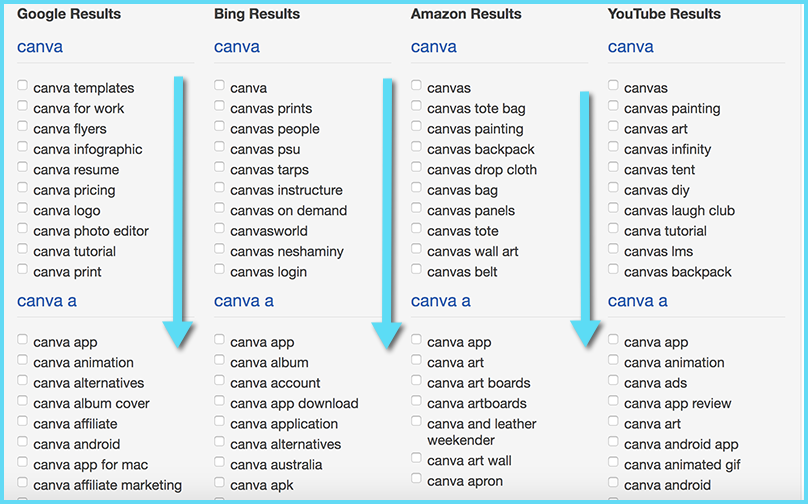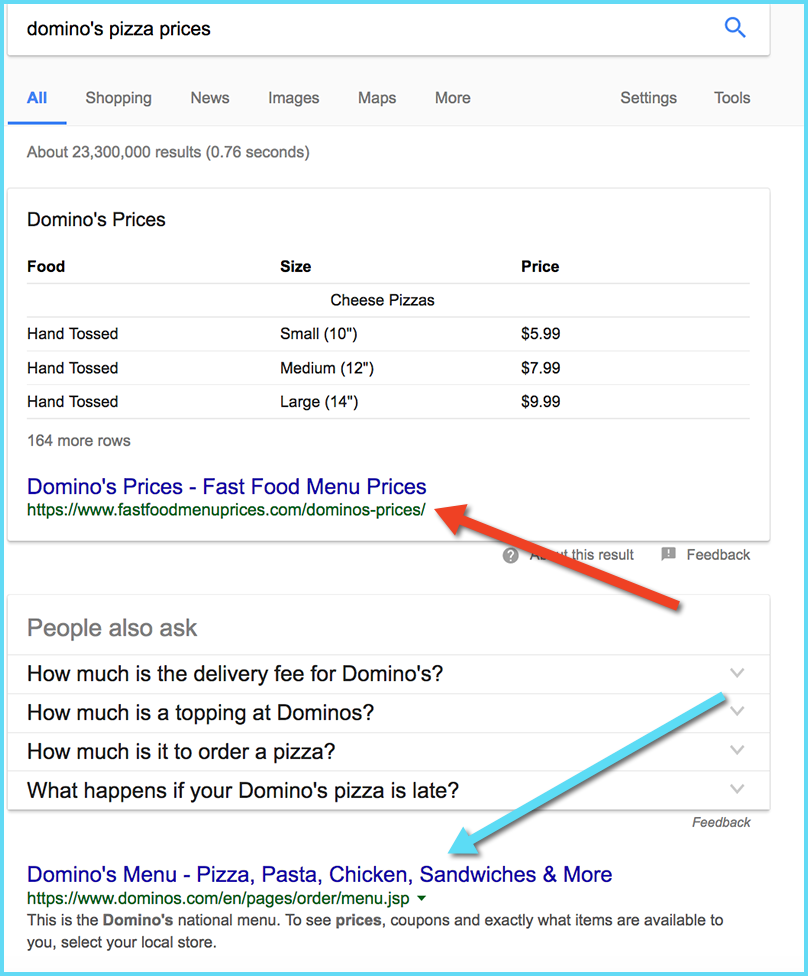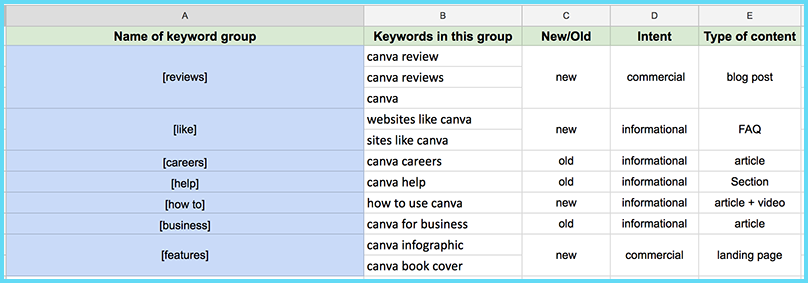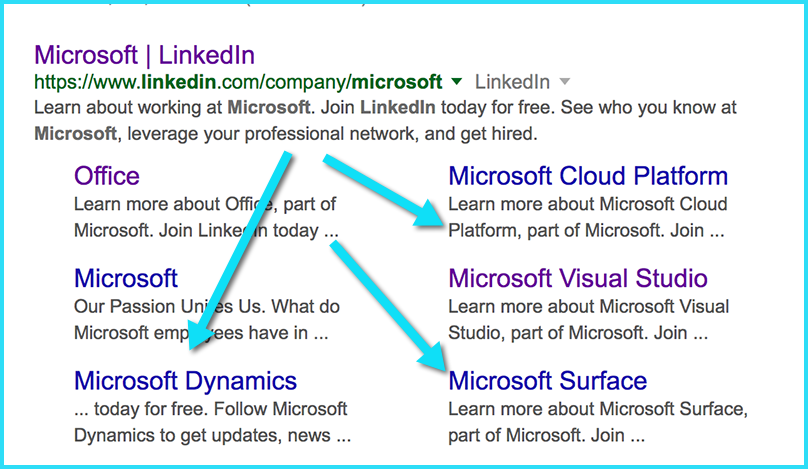Transcript of An Introvert’s Guide to Putting Yourself Out There written by John Jantsch read more at Duct Tape Marketing
Transcript
John Jantsch: Let me ask you this. Do you ever go to an event and then find that maybe you’ll just go and hide out in the bathroom because you’re just not that comfortable networking or working around people in general? Maybe you are an introvert. You’re going to want to listen in to this episode of the Duct Tape Marketing Podcast where I visit with Morra Aarons-Mele. She is the author of a new book called, “Hiding in the Bathroom: An Introvert’s Roadmap to Getting Out There.” We talk a lot about the fact that many people who are speakers and salespeople and are in the public eye that we see maybe as outgoing are actually introverts inside. It’s really more about how you feel about your work, how you feel about interacting the way in which you need to go through the day. I think there’s some surprising things in this interview and you’re going to want to check it out.
This episode of the Duct Tape Marketing Podcast is sponsored by Podcast Bookers, PodcastBookers.com. Podcasts are really hot, right? But you know what’s also really hot? Appearing as a guest on one of the many, many podcasts out there. Think about it. Much easier than writing a guest blog post. You get some high quality content. You get great backlinks. People want to share that content. Maybe you can even transcribe that content. Being a guest on podcasts, getting yourself booked on podcasts, is a really, really great SEO tactic, great brand-building tactic. Podcast Bookers can get you booked on two to three to four podcasts every single month on autopilot. Go check it out. PodcastBookers.com.
Hello and welcome to another episode of the Duct Tape Marketing Podcast. This is John Jantsch and my guest today is Morra Aarons-Mele. She is the founder of Digital Agency: Women Online and author of, “Hiding in the Bathroom: An Introvert’s Roadmap to Getting Out There (When You’d Rather Stay Home).” Morra, thanks for joining me.
Morra A.-M.: Hey, John. I’m happy to be here.
John Jantsch: You also have a podcast of the same name.
Morra A.-M.: I do.
John Jantsch: Introversion, is that a word, introversion? Being introverted is pretty hot right now. It seems like there are a number of books in the last couple of years that have covered this not-often-covered topic. What is an introvert?
Morra A.-M.: An introvert, it’s so funny. I feel weird saying this because A, it’s not like there’s a blood test you can take that says you are an introvert, and B, I’m not a psychologist, I’m a self-taught diagnostician. But I’ll start with what being an introvert is not, because I have learned in talking about the book and researching this and just interviewing many, many people that introverts aren’t always quiet. We’re not always shy. Many of us are very chatty. Many of us like to talk. We like to take up space. We don’t mind being the center of attention sometimes. I think many people think of an introvert necessarily as the quietest person in the room and that is definitely not true.
What we are, are people who temperamentally like to be with ourselves, and in a work setting, really do our best work in an environment where we have more quiet, more space, more control maybe over the pace at which we work. An introvert’s best day is a day with no meetings, no external socializing, and a day to really think, maybe, and process. We can get overstimulated easily in big environments, loud environments, bright environments, which are many, many environments in the modern day world. We can feel like Superman having his Kryptonite drained after a lot of human interaction, especially if it’s with people that we don’t know really well. Again, something that in a work setting, certainly in a bizdev, networking, grow your business kind of setting, happens a lot.
John Jantsch: Yeah, and it’s interesting that you mention that, because I have been a professional speaker for a couple of decades. I know hundreds of professional speakers. That’s a category of work or profession that I think there are a lot of introverts in, that I think that they hide in that description that you just gave. Because obviously, they get up on stage and they’re very funny and entertaining. But I think it’s also more exhausting to do so, because they sort of let it all out there.
Morra A.-M.: It’s extremely exhausting but I think one thing that’s counter-intuitive is that there are a lot of introverts who are performers and salespeople.
John Jantsch:Right.
Morra A.-M.: Part of that is the pacing. When you go and do something like you give a speech, you go, you meet a few people, you get on stage. You might do a book signing or something after, but then you’re done. You have the ability to go be quiet in your hotel room. You might go get on a plane. There’s a lot of quiet time built in. I also run a business and sell for a living, but because I run my business virtually, if I’m not flying around meeting with clients or prospecting clients or giving speeches, I’m by myself. So I’m able to save up all that energy and channel it into talking about the work I love for an hour, two hours, sometimes even a whole day, but then I’ll go build in a heck of a lot of alone time after. So it’s actually a cadence that’s great. I meet a lot of sales reps who are introverts, actually, because they can … Say if you’re a pharmaceutical sales rep, you go, you meet with a potential client, but then you’re in your car driving for an hour. You’re alone. Then you’re back on. It’s not that steady burn, maybe, of a high-paced office environment.
John Jantsch: There are, if we’re going to flip that to a true extrovert, that would be that same sales person who then wants to go get drinks with everybody, right?
Morra A.-M.: That’s right. And me, definitely not.
John Jantsch: You’ve already sort of self-identified, here, but this book’s not really from exhaustive research in the category, I mean, some of it’s your own experience, right? In your own experience, would you say that this is a male/female thing, in any sense?
Morra A.-M.: Not even a little bit. Gender is at play in everything at work because of how people treat us and experience us in systems at work, so in my mind, gender’s always present. I mean, I run a company called, “Women Online,” so all my work is about women’s advancement and the lens through which women see things. But men are introverts. Women are introverts.
Introversion is a piece of my book, but it’s not all of it. I layer in social anxiety, which is something that has greatly affected my life and my work and many, many other people, all different kinds of anxiety, actually. Many, many of us suffer from anxiety and it doesn’t stop when we begin the work day, so we carry it with us and it affects how we do our work. I take that on pretty strongly. Women are diagnosed more with anxiety than men, but men certainly have anxiety, and in a way, it’s worse, because they can’t talk about it. I think men aren’t able to talk about their emotions as much, and certainly at work, there’s this stereotype that it’s always going to be the woman who might be crying in the bathroom where the man just sort of soldiers on and doesn’t feel things, which, again, we all know is not true.
Then, I think there’s a lot of people who are my third bucket, who I lovingly call hermits. I’m a total hermit. A lot of us make the choice … I know one of your guests joked that he, I think his company is called, “Marketing Without Pants”?
John Jantsch: Yeah.
Morra A.-M.: I’ve worked from home for 11 years and I have no intention of going back to the days when I would have to put on Spanx and makeup every single day to get out there. I think that there are many people, and again, this isn’t about gender, who just want more control over the time and space and peace at which they run their work lives, and want that alone time. That, too, is not about gender.
John Jantsch: To some extent, the way we are able to work today actually really allows that.
Morra A.-M.: 100 percent.
John Jantsch: I mean, there are people who can go weeks without actually having human interaction if they don’t want to, and still accomplish an objective, I guess. Is that … are we trying to make that okay? Are we trying to solve for that in some of your analysis?
Morra A.-M.: You know what’s interesting is, I’m actually not a fan of that. There’s two reasons. One is, if you’re ambitious, you’re not going to get very far if you don’t get out there, if you don’t meet people face to face, make a name in your space, cultivate potential clients, cultivate potential relationships. I think that you actually, depending on the work you do and where you want to go, you need to have a role and that necessitates getting out there. Let’s face it, sometimes going and actually sitting with a client or a customer, colleague for hours is really important.
Also, I’m a big believe in community. I come out of old school blogging. The thing that I learned from the early women’s blogging communities was that we built our relationships online by reading each other’s blogs, commenting, back in the day, then it evolved to Facebook and Twitter and now YouTube, et cetera. But we always saw each other at conferences and we cemented those bonds and reinforced those friendships and I think that all kinds of professional networks are the same, so again, it’s about balance. You’re not going to get, especially if you’re ambitious and you want to build a really great small business or whatever you do, you’re not going to get where you want to be by hiding all the time. But I also completely reject the idea that you have to be always on, never eating lunch alone, and always pushing it to get where you want to be.
John Jantsch: Well, and I think that’s a major theme in your book, is that a lot of this stress is caused by the cheering, the loud cheering out there of, “This is what you have to do!” I think you are, actually, I felt like you are actually trying to give people permission to not listen to that.
Morra A.-M.: I want them to completely shut it off. I call it achievement porn and entrepreneurship porn and I just think it’s crap. I mean, I think that as much as I love social media and as much as I have been, let me be honest here, bragging a ton and posting photos of myself trying to look fabulous in my book tour, I think that the narrative that we have developed around success … and I say we, because we’re part of it and social media, those of us who host podcasts and give advice to people. The real media’s part of it because it always posts these sort of breathless profiles of entrepreneurs who are restless and stop at nothing. It’s a whole system that overly glamorizes the always on, super out there, stop at nothing, won’t take no for an answer, crushing it model. I personally find that alienating and sort of toxic. That’s not how I work, that’s not how I sell. It’s not how I negotiate and it’s not how I want to live, and a lot of other people don’t, either.
John Jantsch: I think that that’s a great part of the message is what you’re really saying is you shouldn’t be this or that, you should be yourself.
Morra A.-M.: You should be yourself and also you should accept, and I hate to use the word “should,” because we’re not … My therapist always says, “Don’t should yourself!”
John Jantsch: Right, right. Should all over yourself, I should think.
Morra A.-M.: But I think that the other thing is to understand your own personal boundaries and set limits around that, and that can include, as an entrepreneur or a small businessperson, maybe having a smaller business. Earning less money. Saying no to things even when you feel like, “Oh my gosh, if I say no to this, am I missing out on my dream opportunity?” You got to learn how to make some limits, otherwise you’ll always exist in a very stressed out state of feeling like you’re not in the right place.
John Jantsch: You mentioned social media already, and I think that that’s causing a lot of anxiety for people. The goofy term “FOMO” that people talk about, because they’re either having this amazing thing or they’ve done this. I see people, they put on Twitter, “Just had an amazing chat with Richard Branson and he gave me some great [inaudible 00:12:56].” You’re like, really? Seriously? That needed to be on Twitter? But that’s what we consume if we want or allow ourselves to every day. But you had a … I can’t remember who you attributed this to, maybe Brian Seles, “JOMO,” joy of missing out. I think that that’s actually-
Morra A.-M.: Anil Dash.
John Jantsch: Oh, is that, it was Anil, okay. I think that that’s a term that people ought to really wrap their heads around.
Morra A.-M.: I love JOMO. I’m obsessed with FOMO, which of course was coined by the great Caterina, I don’t know if she coined it but she brought it to consciousness, Caterina Fake, who co-founded Flickr. I think that it’s a double-edged sword. I think when it comes to social media FOMO, those of us who are hustlers have to learn to give as good as we get. I think that the FOMO and the narcissism it creates is real. We are all, as we hustle and try to build our online brand, we’re all bragging all the time because that is the point of what social media wants us to do. It wants us to keep us addicted and hungry and checking in on everyone. Again, we’re all just people and so it’s really easy to just harmlessly check LinkedIn at lunch and learn that your former colleague or frenemy or college roommate just did something amazing and you feel like a schmo. Especially if you’ve made the choice like me, to work at home in your yoga pants and do less. Then you really feel like crap.
However, FOMO is a great tool because if, like me also, you want to cultivate the sense that you’re in demand. I mean, what that person is tweeting about Richard Branson is really saying is, “I’m elite. I’m special. I’m smart, and so, you should want me.” I mean, that’s what they’re really telegraphing. As a businessperson, it’s important to telegraph that FOMO. It’s a classic trick that you always see in Silicon Valley and when people are looking for an investment, or an author is shopping a book. You need to signal to potential customers that you’re worth it. What I try to talk about in the book is to try to ban FOMO as a toxic force that makes you make decisions, which is easier said than done, because we all feel it. But also, to really strategically use social media when it can help you, especially if you’re a hermit entrepreneur and you like to work at home, to make it seem like you’re more out there than you are.
John Jantsch: Well, and I think a lot of … I started blogging in 2003. I’ve been podcasting since 2005. I will tell you that having a strong online presence really works, if you’re an introvert. I think that that’s something that a lot of people miss. It’s not about having … it’s like that props me up so I don’t have to go network if I don’t want to, if that makes sense.
Morra A.-M.: It’s an annuity, it works for you in your sleep. But you also don’t have to tweet about fancy people because you’re creating high quality stuff that is really about what you do and the value that you give. I mean, I think that that’s the message that people miss a lot in their desperation to build a followership or a brand or all these crazy words that we toss around is that there is something to be said about quality. As I have been trying to promote my book and grow, I’ve had a lot of stuff rejected, actually, by media outlets, and in a way it’s felt kind of good. Like, “Oh, wow, there are standards out there. There are journalistic standards out there. I do really have to work hard. I can’t just put anything up online and see it printed.”
I think that we forget that quality and building as you have and as I hope I have, I’ve also been blogging for a billion years and I’m still writing long pieces out there like I’m a dinosaur when it comes to the medium these days, but I believe in the written or typed word. Quality matters and credibility matters.
John Jantsch: I think it matters more than ever.
Morra A.-M.: Yeah.
John Jantsch: The sea of stuff that’s out there, I think that’s how you differentiate today, and that wasn’t always the case. Five, ten years ago, it was just being there maybe was the difference. I read first this term in a book by Dan Pink, “ambivert,” and I don’t know if you’re familiar with that term but he used it as like ambidextrous. I suppose that there are people who have that introverted tendency who can be maybe temporarily extroverted, when they need to. Is that more of what we’re talking about for somebody like yourself, or is that really just trying to make up terms?
Morra A.-M.: Yeah, I don’t know, and I don’t think it matters. I think that we learn at a young age what success is supposed to look like. Certainly if we grow up in corporate America and see people selling and pitching and leaders speaking at conferences, we learn how to mimic them.
John Jantsch: Yeah.
Morra A.-M.: These are skills that you actually have to learn. No one is born knowing how to give a great speech or make a sales pitch, the same way you’re not born knowing how to do Excel or PowerPoint. You have to learn it. So I think that those of us who are adaptive and ambitious absolutely learn skills along the way. It doesn’t mean that our nature isn’t introverted. It doesn’t mean that given our druthers, we would have a quiet day to sit and write and even answer email or do something that’s a little bit less draining. But that’s what we have to do to get our work out there and to advance.
I see it more as an essential set of skills that we all learn and then we also manage our time and our energy around. No one’s going to give you a free pass. Eventually, if you’re going to get to a position of leadership, and you can see this in every introverted and awkward scientific or Silicon Valley leader, you have to learn how to command a room and talk to a public audience. So I would encourage people who feel like that’s not natural to them, which is most of us, to put the work in and practice and build even that muscle memory. Any good speech coach will tell you that really what it’s about is muscle memory when you’re giving a presentation, a sales pitch, running a meeting, any number of the things that tax introverts but also are a skill that we all need to learn.
John Jantsch: It’s interesting. I’m dating myself a little bit here, but I remember some very, very awkward talks by Bill Gates.
Morra A.-M.: Yep.
John Jantsch: 10 years, 15 years later, he was not … He was never going to be Steve Jobs, but certainly was much more polished. All right. So let’s get down to some … We’re been talking sort of in generalities and we only have a few minutes here left, so I’m going to challenge you to give us a very concrete plan of action. There’s one part of your book, the 14-point plan for surviving events. Wonder if you could maybe dip into a couple of those, because I will tell you, maybe it’s just because I’ve not experienced the right ones, but going to a networking event is about the last thing on my list.
Morra A.-M.: Absolutely. Actually, if you go to my website, hidinginthebathroom.com, and sign up for my newsletter, which is infrequent and good, you will get a really great PDF that you can download and take to events. It’s actually, I turned it into a 16-point plan. But in the book it’s a 14-point plan. I think that the thing is, first, when you walk in, is to channel your inner Oprah. Or play journalist. So many of us are anxious about making conversation. The truth is, you don’t have to make conversation. You can smile and ask someone a question. People love to answer questions and talk about themselves, and so you can keep going with questions. Many introverts, we don’t like the light shone on ourselves and we don’t like to talk, and so this is a great strategy. People will remember you, actually, as a great conversationalist.
Another tip, and this is something that I do for all of my public speaking, client meetings, networking events, is I sort of wear my battle gear or a costume. I put on the Public Morra. This is for men and women. Men might have something like a watch or a suit or an outfit they really like. Women, certainly, I would recommend having a couple of go-tos. I get my hair done, I put on my red lipstick, and I literally can transform myself not into the socially anxious person who wants to hide in the bathroom, but in the person who can walk into a room and feel comfortable because I look the part.
John Jantsch: Yeah, and so it’s like you’re playing a role, almost.
Morra A.-M.: The other thing that I think is really, really valuable, and this is sort of nerdy of me, but if I’m going to a networking event or a conference where I really have a goal, I know what that goal is. I try to, and I learned this from a friend of mine, Jane, who’s an entrepreneur, is that she researches attendees, she really plans for it. I always joke that she needs someone like Gary in “Veep” who can prep Julia Louis-Dreyfus, the candidate, on who people are in a room, because she takes it for what it is, a strategic opportunity. So she has a goal, and I’ve learned this from her, walks into the room, and will say, “Okay, I really need to meet Dan from Proctor & Gamble, or Dan from So-And-So, whatever,” and she figures out a way, and then she’s done. I think a lot of us feel that the challenge to one of these networking events is actually staying and having a good time, and that’s not it at all. You’re there to do a job. Doesn’t matter, this is not high school, it doesn’t matter if anyone likes you or wants to sit with you. So figure out who’s in the room, do your homework, set a goal, and then let yourself leave.
Then the other thing, and this a really, really fun piece of advice, is to chunk your time. This is really good if you have to go to ever like a two-day conference or multi-day or night event, which I find very, very, stressful, is again, set those goals and then pace yourself and give yourself times out. I’ve talked to a lot of people who say, “Well, I’ll go to a cocktail hour, but then I let myself go up to my room and watch Netflix and have room service. I don’t make myself go out to dinner.” I have never, ever gone out to dinner. I think that you can, again, build in breaks and give yourself a break and not push yourself too hard, and you’ll get the most of it.
Then, I’m actually looking at all of these, I would say that one other thing that I really like is to adopt an extroverted or some other conference spouse or event spouse. Have a wingman. This can help, and especially if you’re an introvert and you aren’t likely to want to shine your own light, have someone who can cue you, who can say, “Oh, really, that’s interesting. You do X? Did you know that Morra just completed a project for this client that you’d really be interested it?” Then my wingman cues me and I’m ready to go. Having people who are by your side and can help set up conversations is really great.
Anyway, there’s a lot of things like that, but at the end of the day, I would say that if you’re like me and you literally are tempted to go hide in the bathroom, not just walking into an event but during it, A, that’s okay, and first of all, you meet great people in the bathroom. I’ve met some of actually, literally my best friends and colleagues hiding in the ladies’ room, certainly at blogging conferences. Second is just to remember to tap into the meaning and the motivation of why you’re there. Whether it’s to build your business, make a connection, learn something, tap into the meaning of who you are, why you got there, and push yourself through for 10 seconds. You can do anything for 10 seconds.
John Jantsch: Well, and I think that-
Morra A.-M.: And then you’ll be in the door.
John Jantsch: I think introverts, entrepreneurs, especially these hermit entrepreneurs, actually are good checklist people.
Morra A.-M.: Yeah.
John Jantsch: So I think having a checklist of, here’s what I’m here to accomplish, is really, really great advice. I meant to tell you at the outset, I learned about your book from I think it was a tweet or Instagram from Lena Dunham. So, good for you. Did you know that?
Morra A.-M.: There’s me cultivating FOMO.
John Jantsch: Did you know that, though?
Morra A.-M.: I didn’t know that. I didn’t know that. I knew that her website, Lenny, excerpted the book.
John Jantsch: Yeah.
Morra A.-M.: I think that one of the things that I’m really happy about and at the ripe old age of 41 is I will talk about my anxiety and my limitations, my medication, my inability to fly if I’m not incredibly out of it on Xanax because I’m so anxious, because I’m not Sheryl Sandberg. I’m never going to be Sheryl Sandberg. I have a small business. But I’ve cultivated a really amazing career, and I’ve done really, really great work that I’m proud of. And I’ve done it working three days a week, really limiting my exposure to other people, trying not to fly, really not doing a lot of the things that people on stage at conferences tell us we have to do. I would just say to people out there who have a big dream but think, oh my God, do I have to be on a plane or never see my family or never sleep or schmooze all the time to check out the book, because it’s got worksheets, it’s got all kinds of … I love checklists, a lot of checklists, a lot of quizzes. It’s really practical and I hope that we’ll offer an alternative path.
John: Awesome. Morra, thanks for stopping by and hopefully … I think you’re in the New York area and hopefully we’ll bump into you next time … and that way.
Morra A.-M.: I actually am in Boston.
John Jantsch: Boston. Okay. Awesome.[crosstalk 00:00:22]
Morra A.-M.: Thank you so much John, I really appreciate it.
John Jantsch: All right. Take care.
Morra: Bye.
Powered by WPeMatico












 Jessy Troy is an experienced writer and freelance editor who runs
Jessy Troy is an experienced writer and freelance editor who runs 